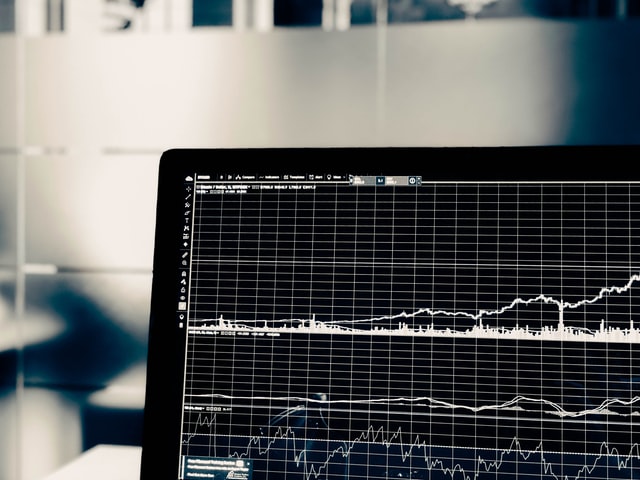The GDP growth rate in the first quarter fell below the lower limit of potential growth rate. The quarter on quarter growth rate in the first quarter was lower than the lowest level in 20112019. The investigated unemployment rate in 31 major cities exceeded the impact of the epidemic in 2020, reaching 6%. This shows that the economy is not a risk, but a recession.
The annual economic target is in jeopardy. We expect: referring to history, the repeated epidemic since March has affected the economy by about 1 percentage point in the first quarter and 1.5 percentage points in the second quarter, dragging down the annual GDP growth by about 0.7 percentage points. Under static calculation, the annual GDP is about 4.8% year-on-year.
Will economic targets be revised?
From a policy perspective, the bottom line of economic growth still needs to be maintained, so the probability is still two-fold: epidemic prevention and economy. There are two 5.5 goals for the government this year: one is gdp5 About 5, another is to control the unemployment rate within 5.5. Even without considering GDP, from the perspective of employment, especially in combination with 2020, which has the greatest impact of the epidemic, the target for employment in that year is 6%, and the latest is 5.8%. It is expected to rise further in the future. From this perspective, even without considering GDP, the demands of policies for economic growth and employment have reached the bottom line, which is difficult to be further adjusted.
Economic pressure, how to deal with the policy?
The core problem of the current economy lies in the epidemic situation and epidemic prevention measures. If policies want to coordinate epidemic prevention and economic development, macro policies such as cross cycle and counter cycle need more flexible space. Monetary policy bears the brunt, and the 23 measures of the central bank have been implemented quickly. Of course, the impact of the epidemic has increased. Under the triple pressure, several policies such as finance, finance and employment have also been raised.
On the one hand, we should see the far-reaching impact on the economy under the determination of dynamic zeroing. On the other hand, we also need to reasonably estimate how much the policy is determined to dynamic zeroing and how much efforts will be made to stabilize growth.
Of course, today is different from the past. Can the policy take root smoothly after the policy is put into force? Can market players cooperate after continuous attacks? Can market confidence gradually recover? This is the fundamental to determine whether there will be further pressure in the follow-up of the bond market.
Referring to history, the bond market interest rate declined in most years from the release of economic data in the first quarter to the end of the second quarter. In this process, there were several years of poor performance, namely, 2013 and 2017 in the Great Bear City, 2015 under the impact of large-scale local debt, and 2020 under the impact of the epidemic. Among them, the market situation in 2020 is the most noteworthy. The policy guides the economy to gradually get out of the epidemic, and the monetary policy increases and widens credit. Once the policies of other departments form a joint force, the monetary policy of the central bank will be gradually normalized. After April, the bond market interest rate began to reverse and rise.
The interpretation of the market in the second quarter of 2020 shows that the inflection point of the epidemic, the formation of joint efforts of policies and the recovery of market confidence are the three preconditions for the central bank to start the normalization of monetary policy, and also the main thrust for the gradual recovery of interest rates in the process of reducing reserve requirements and interest rates.
The interest rate trend after the RRR reduction in December 2021 shows that after the policy is implemented, the market will pay attention to the policy effect and further force, and the achievement of the policy purpose. Once it is less than expected, there is still room for the interest rate.
The inflection point of the epidemic, policy synergy and market confidence are the three major concerns of the current bond market.
The reserve requirement was lowered at the weekend, and the data and policies were gradually implemented on Monday. The market paid attention to the inflection point of the epidemic, paid attention to the further efforts of policies, and paid attention to whether the market's own confidence was restored, so the bond market began to adjust.
So is this adjustment an inflection point signal, similar to April 2020, or is the stage swinging, similar to December 2021?
In the short term, we should first look at whether the LPR will be lowered on the 20th and the extent of the reduction. If the LPR will be lowered by 10bp and the five-year LPR will be lowered simultaneously, the policy credit will undoubtedly increase further; Second, we should look at the trend of China's stock interest rate in late April, so as to observe the physical financing demand and the strength and effect of policies. Third, we should observe the PMI, so as to observe the confidence of market subjects. If the above directions show a positive tendency to broaden credit, the bond market needs to be cautious. Otherwise, the bond market can maintain its participation. At least the current coupon strategy and urban investment leverage are better choices. Finally, we should emphasize that there are many opportunities in the second quarter, but tossing is inevitable.
Risk tip: there may be errors in data calculation, the epidemic spreads on a large scale, real estate financing is tightened, and the financial force is less than expected
